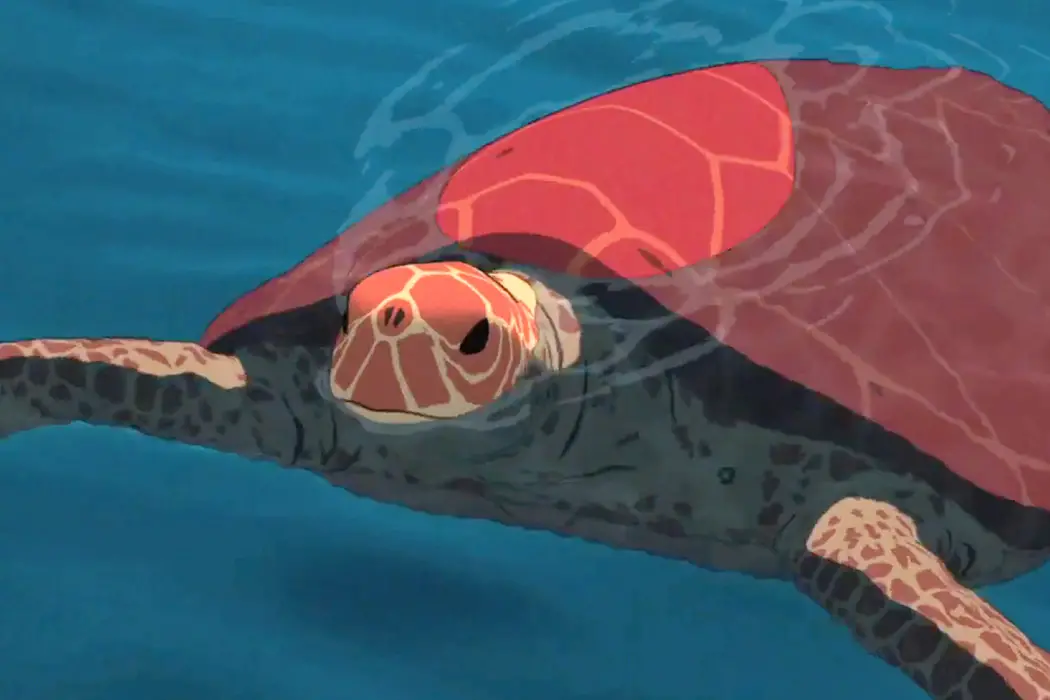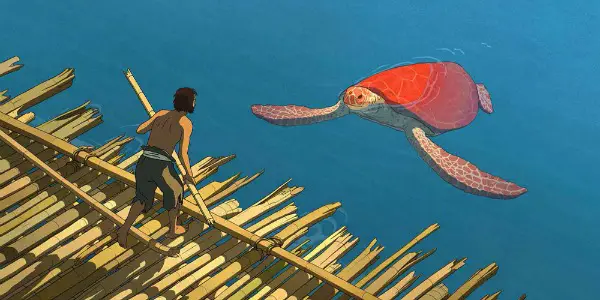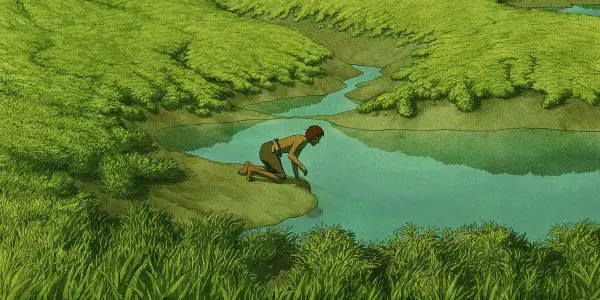THE RED TURTLE: A Quietly Profound Animation

Alistair is a 25 year old writer based in Cambridge.…
Simplicity can sometimes lead to the most emotionally profound concepts imaginable – that’s certainly the case with The Red Turtle, the awe inspiring debut feature length animation from Dutch filmmaker Michael Dudok de Wit.
Although completely free of dialogue in a manner which invites comparisons to Aardman Animation’s similar silent film experiment, 2015’s joyous Shaun the Sheep Movie, this isn’t a tribute to the slapstick heroes of cinema’s early days.
The Future of Silent Cinema?
Whereas that terrific stop motion effort was largely intended to reintroduce modern audiences to the simple, humorous joys of silent film, with inspired visual gags Buster Keaton and Charlie Chaplin would have been proud of, The Red Turtle is an entirely different proposition. Despite its brief 80-minute runtime, this feels like an epic feat of storytelling and modern animation.
Dudok de Wit doesn’t use a lack of dialogue as a construct for visual humour – instead, he relies on the breathtaking visuals to condense a decades spanning fairytale into something equal parts human and magically realist. He knows that no line of dialogue could rival the animation in terms of delivering an overpowering emotional response, especially considering all the exposition modern audiences would require to fully understand the more fantastical plot elements.

The film opens in the middle of an ocean, as a severe storm leads the nameless protagonist to a desert island. His boat is ruined, with all his other attempts to craft a raft from bamboo all leading him to get washed back on the shore, due to some underwater creature destroying his raft. During the man’s third attempt to leave the island, he catches a glimpse of the nautical animal foiling his escape plans – a gigantic red turtle. He later finds the turtle has followed him back to the shore, so attacks it, only for the turtle’s shell to later split in half and reveal something more mysterious hidden inside.
After a landmark twelve months for animation, with spectacular feats in stop-motion (Kubo and the Two Strings) and CG animation that manages to be hyper-real without visiting the uncanny valley (Moana), the hand-drawn simplicity of The Red Turtle still manages to create the most profound animated imagery in recent memory. The film is co-produced by Studio Ghibli, but comparing it to their hand drawn masterpieces is a futile effort; Dudok de Wit appears to be more inspired by Belgian cartoonist Hergé and how the characters in his Tintin graphic novels managed to convey emotion despite deceptively unexpressive facial designs.
Like those famous creations, Dudok de Wit’s characters have two small black dots for eyes, in addition to other simplistic renditions of facial features. Without flashy character design, names, or any clear personification of the onscreen creations, the fact that the film manages to effortlessly convey the emotional struggles and triumphs of its characters is a commendable feat. The lack of dialogue isn’t necessarily a crutch, as the little details in the animation help fill in any expositional blanks.
It’s all in the Little Details…
Look, for example, at the multiple creases that appear on the protagonist’s T-shirt, which nods to the character’s increased starvation without calling attention to itself. Even the character’s loneliness is dealt with solely through pained facial expressions – in other films about being stranded away from civilisation, this emotion would be conveyed by introducing a basketball for the protagonist to talk to.
The character only remains lonely through the first act, but to say any more about the direction the story takes would be to strip away some of the film’s most magical and heartfelt surprises. The narrative eventually reveals itself to not be a meditation on loneliness, or surviving in the wild, but instead about the simple nature of life’s joys. Just like stripping the film of dialogue reveals the base pleasures of a predominantly visual medium, taking a character away from society and seeing how he develops across many years highlights that once you become accustomed to a new way of life, you can start enjoying everything life throws your way, even if there are struggles lying ahead.

Both the medium of cinema and the modern way of living are boiled down to their simplest elements, yet manage to feel transcendentally poetic here. This is due to the stunning animation and the understated fantasy influence that gives this story the feel of folklore that has been passed down across countless generations and centuries.
The timeless feel of the story is maximised by the attention to detail in Dudok de Wit’s animation, which feels utterly distinctive yet instantly recognisable. All the nighttime scenes aren’t portrayed in dark colours; instead, they are captured through intense greys that give the illusion of black and white – this equally creates a visual sensibility that alludes to a surrealist dreamscape (the protagonist imagines chasing an orchestra in one nighttime sequence), as well as harking back to the influence from the golden era of silent cinema.
Aside from the captivating blues of the ocean, Dudok de Wit specialises in never defining any of the animated features through bright primary colours. Instead, he uses more earthy shades; the leafy forests aren’t bright or dark green, but an indistinct shade somewhere in-between that feels closer to reality. The hand drawn nature of the visuals ensure that it doesn’t come close to the “uncanny valley” of CG, but it is designed in a manner that makes it feel believable – grounding the more fantastical elements in a recognisable reality.
Conclusion
The Red Turtle is a wondrous work of animation, that will surprise with how it hides profundity within its seemingly simplistic narrative.
The Red Turtle will be released in the US on January 20th and in the UK on May 27th. All international release dates are here.
Does content like this matter to you?
Become a Member and support film journalism. Unlock access to all of Film Inquiry`s great articles. Join a community of like-minded readers who are passionate about cinema - get access to our private members Network, give back to independent filmmakers, and more.
Alistair is a 25 year old writer based in Cambridge. He has been writing about film since the start of 2014, and in addition to Film Inquiry, regularly contributes to Gay Essential and The Digital Fix, with additional bylines in Film Stories, the BFI and Vague Visages. Because of his work for Film Inquiry, he is a recognised member of GALECA, the Gay & Lesbian Entertainment Critics' Association.













